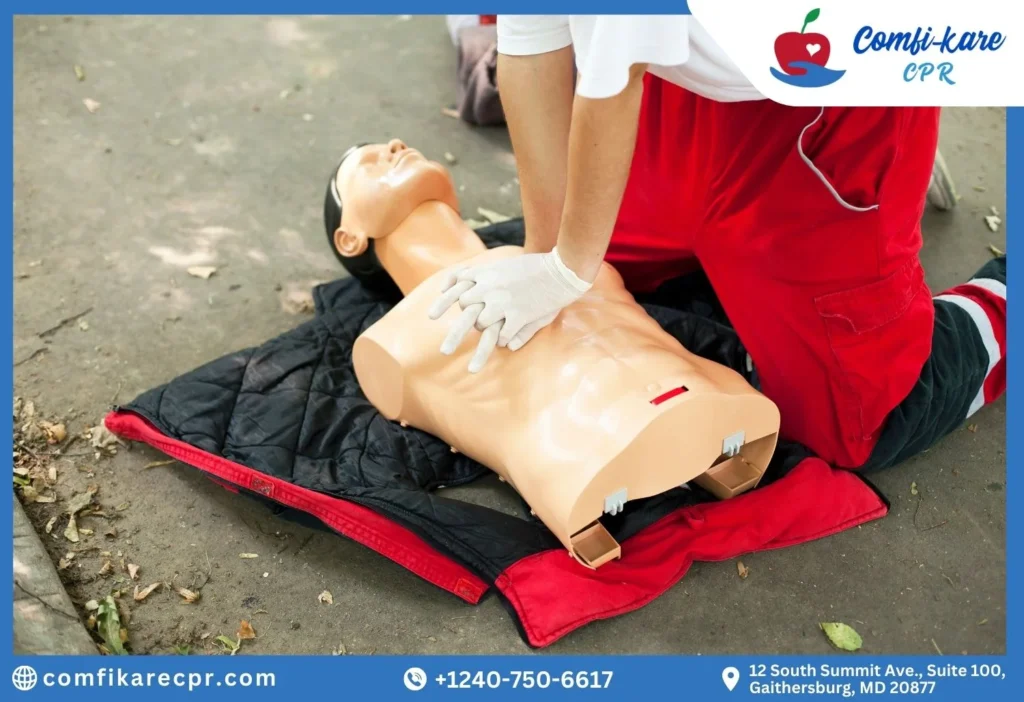
The demand for CPR certification has increased today. The advent of modern technologies has determined the role of CPR. Today, medical advancements have led to the diagnosis of various heart issues, so timely treatment is also feasible in such a case.
When we compare the cardiac arrest symptoms between men and women, we have seen that women have a higher rate of sudden cardiac arrest. Many women diagnosed with heart disease remain undiagnosed. Research has found that cardiac arrest mostly occurs at night among older women. So, when the heart stops beating, women lose consciousness within seconds.
As a result, with no timely intervention, there is a death. However, with CPR certification in Frederick County, MD, or cardiopulmonary resuscitation, the chances of survival increase.
In today’s blog, let’s explore how women can take care of their heart health and what to do when someone has a sudden cardiac arrest. You may have believed that cardiac arrest also led to chest pain, but this is not always true. There are several cases where women do not feel any pain but pass away suddenly.
What is a Sudden Cardiac Arrest?
People use the terms Sudden Cardiac arrest and Heart attack interchangeably; however, both are completely different. A heart attack occurs when there is a blockage in the blood flow to the heart, while cardiac arrest is completely different. It occurs when there is an interruption in the electrical impulses that cause the heart to stop beating.
Therefore, it is important to understand the risk factors for women and know the risks.
What are the Risk Factors of Sudden Cardiac Arrest in Women?
Older women are prone to the risk of sudden cardiac arrest; however, there may be several reasons behind it. Women with a history of heart disease are at increased risk of sudden cardiac arrest and heart arrhythmia. Having high cholesterol and diabetes also increases the risk.
Let’s look at some of the top risk factors for cardiac arrest,
- Coronary Artery Disease (CAD)
- Depression
- Family history of abnormal heart rhythms
- Previous cases of heart attacks
- Smokers
- High cholesterol and diabetes
- Dilated cardiomyopathy
These are some of the risk factors. However, there are numerous risk factors, so it is important to speak to healthcare professionals about them.
Cardiac arrest Signs
It is important to know about the signs and symptoms of cardiac arrest. When you know the signs of sudden cardiac arrest, you can take timely action to minimize the risk of death.
In this section, we are going to look at some of the top signs of cardiac arrest. Recognizing these signs helps to minimize the risk of death and increase the chances of survival.
- Sudden collapse
- No breathing
- Losing consciousness
- Chest discomfort or chest pain
- Breathlessness
- Heart palpitations
- Weakness
Some signs like chest pain, breathlessness, heart palpitation, or weakness often happen before the Sudden Cardiac Arrest (SCA).
But most of the time, sudden cardiac arrest comes without any warning.
How Can Women Take Care of Heart Health?
Make some changes to your lifestyle and you live longer. In this section, we are going to look at certain circumstances that may increase the chances of cardiac arrest and how you can minimize them. So, along with the healthy people, we will also look at the cardiac arrest survivors.
Firstly, practice and adapt the lifestyle for optimal heart health
- Maintain a healthy weight
- No smoking
- Eating a healthy diet
- Doing moderate exercises
- Managing stress
Now let’s look at the heart health of cardiac arrest survivors.
Cardiac arrest survivors are more prone to cardiac arrest; therefore, the doctors recommend the placement of an Implantable Cardioverter Defibrillator (ICD). It helps in the monitoring of the heartbeat and provides an electrical shock, when needed, to restore the normal heart rhythm.
What Should You Do When Someone Has a Cardiac Arrest?
Since the cases of Sudden Cardiac Arrest have increased, the American Heart Association (AHA) has rolled out CPR certification courses in Maryland. The CPR certification is for anyone who understands heart rhythms and is fit to give effective chest compression.
In the following section, let’s look at some of the things that you should do when someone is having a heart attack.
- Call 911
- Access the situation
- Check for responsiveness
- Check the breathing of the individual
- Give proper chest compression
- Give 2 rescue breaths
- Continue giving 30 chest compressions and 2 breaths
- Use AED
To give an effective chest compression, follow this,
- The hand position should be proper
- Keep one hand on top of the other hand in the center of the chest
- The shoulder should be directly over the hands with the locked elbows
- The depth should be 2 inches, and the rate should be 100–120 per minute
- Once you start the chest compression, allow the chest to return to its normal position after the compression
Chest compression can only be effective when given properly. Various CPR training classes in Frederick County, Maryland, teach the right way of doing CPR. Ensuring that you have the right CPR training gives you certain benefits from CPR certification.
CPR Certification Course Near Me in Frederick County, Maryland
If you or your loved one is looking for CPR classes nearby in Frederick County, Maryland, the instructors of Comfikare CPR are offering affordable courses. You don’t need a medical degree to get CPR classes, and anyone without a medical degree can take the course. You can choose your timing and schedule, and CPR instructors will come to your preferred location and schedule.
If you have been looking for CPR training classes near you, enroll now.



